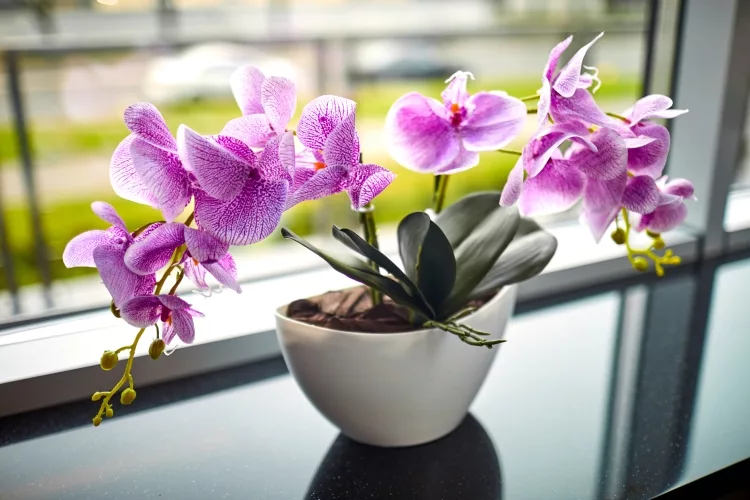reviewed by Truman Perkins
Aerial plants survive in "air or wind" the wind serves as the plants' water. What are aerial plants? This is the question that arises when we think about aerial plants. And several people are unable to answer this question correctly. Being familiar with the aerial term is that they can also be called tropical and equatorial regions on the earth.
An explanation about aerial plants is given below. A brief introduction, along with the types of aerial plants, is mentioned below.
Contents
Most 'aerial plants' are present in "tropical and equatorial regions" of the world.
In evergreen rain forests, "the foliage is so thick," which some plants have expanded into "aerial roots" to allow them to consume more sunlight.
These are a list of 10 different aerial plants, and down below a brief explanation of their structure, growth, and well as functionality I also was given. Moreover, the plants are ten in number, and each plant has its significance and function. A brief description, along with a brief explanation, is written below just for informational purposes.
And these are brief explanations about these plants.

Orchids are mostly considered to be the most highly evolved of all flowering plants.
Bromeliad is a flowering plant that exhibits a unique reproductive strategy. All the orchids have both the male and female reproductive structures fused into a single column.
These monopodial epiphytic, other times lithophytic herbs with long, coarse roots and short leafy stems are hidden by overlapping leaf bases. The leaves are usually arranged in two rows, relatively large and leathery, oblong to elliptic, and sometimes succulent.
Staghorn ferns are about 18 species of epiphytic ferns in the genus Platycerium of the polypod family, also known as Polypodiaceae native primarily to Africa, Australia, and Southeast Asia, whose fronds supposedly resemble the forked antlers of male deer or elk. A sizeable hanging staghorn fern in a Florida landscape.
Growing in coastal saline or brackish water, a mangrove is a shrub or small tree containing a complex salt filtration androot system to cope with salt water immersion and wave action. They are adapted to the low oxygen conditions of waterlogged mud. And they are mostly grown in lakes and coastal areas whereas the water level is lower.
Spanish moss is a native, perennial epiphytic herb. It is not Spanish, nor a moss, but a flowering plant. The slender, wiry, long, branching stems reach 8m or more and grow as suspended, bluish-gray streamers and garlands draping among tree branches and sometimes telephone lines and fences.
Moss is a hard, slow growing, sometimes only one cell thick green plant which uses light for photosynthesis in order to produce nutrients for its growth, just like regular plants.
Tillandsia, the most widely distributed genus of the pineapple family, which is known as Bromeliaceous, which contains about 500 species of tropical American plants. They are mainly perennial herbs that are epiphytic. They are supported by other plants and having aerial roots exposed to the humid atmosphere. These leaf rosettes, a common physical characteristic in Tillandsia species, collect nutrients and water. The flowers typically involve bright, vibrant colors, with blooms or inflorescences produced on a stalk or several stalks. The flower's color varies greatly; red, yellow, purple, and pink flowers exist in this genus, and multicolored flowers are known. The bright colors attract pollinators. An air plant's foliage may also change color when it blooms, also attracting pollinators. The hermaphrodite flowers are threefold with double periapt. The three free sepals are symmetrical and pointed. The seeds have a "parachute" similar to the dandelion. This also comes under the category of aerial plants.
any plant of the genus Hedera, with about five species of evergreen woody vines, rarely shrubs, in the ginseng family, also known as Araliaceae. The name ivy primarily denotes the commonly grown English ivy. It is also categorized as an aerial plant.
Which climbs by aerial roots with adhering disks that develop on the stems.
bromeliads are short-stemmed epiphytes that live in trees or on cacti, though a number are terrestrial. The flowers have three parts, like lilies but with contrasting sepals and petals, and are often borne in long spikes with distinctive colored bracts. Most have fleshy fruit, but some produce dry capsules.
A banyan or 'bananas a type of a fig which mostly grow on another plant as an epiphyte. Its seeds germinate in the cracks and crevices on a host tree or other structures like buildings and bridges.
Banyan usually means the Indian banyan or Ficusbenghalensis.
This is also a type of aerial plant and comes under this category. Pink Quill is a member of the bromeliad family of air plants. The plant has gotten its name from the plume of bright pink bracts which last for months. These green narrow leves appear in summer growing in a rosette with flower spikes. Its pink bracts are densely overlapping, with violet-blue flowers emerging for a brief show.
They are perennial herbaceous plants that exhibit many physiological and morphological differences making this a diverse genus. Having native habitats that vary from being epiphytic and saxicolous, species have specific adaptations, such as root systems designed to anchor to other plants or substrates and modified trichrome for water and nutrient intake. Like most Bromeliaceae, some of the species grow as funnel bromeliads, with a compressed stem axis. The leaves are then close together in rosettes and cover the lower areas of the leaves, forming a funnel for collecting water
How to sell Aloe Vera Plants in India?
 |
 |
 |
 |

About Truman Perkins
Truman Perkins is a Detroit-based SEO consultant who's been in the business for over a decade. He got his start helping friends and clients get their websites off the ground, and he continues to do so today. In his free time, Truman enjoys learning and writing about gardening - something he believes is a natural stress reliever. He lives with his wife, Jenny, and their twins in Detroit.
 |
 |
 |
 |
Check These Out
Get new FREE Gifts. Or latest free growing e-books from our latest works.
Disable Ad block to reveal all the links. Once done, hit a button below
 |
 |
 |
 |